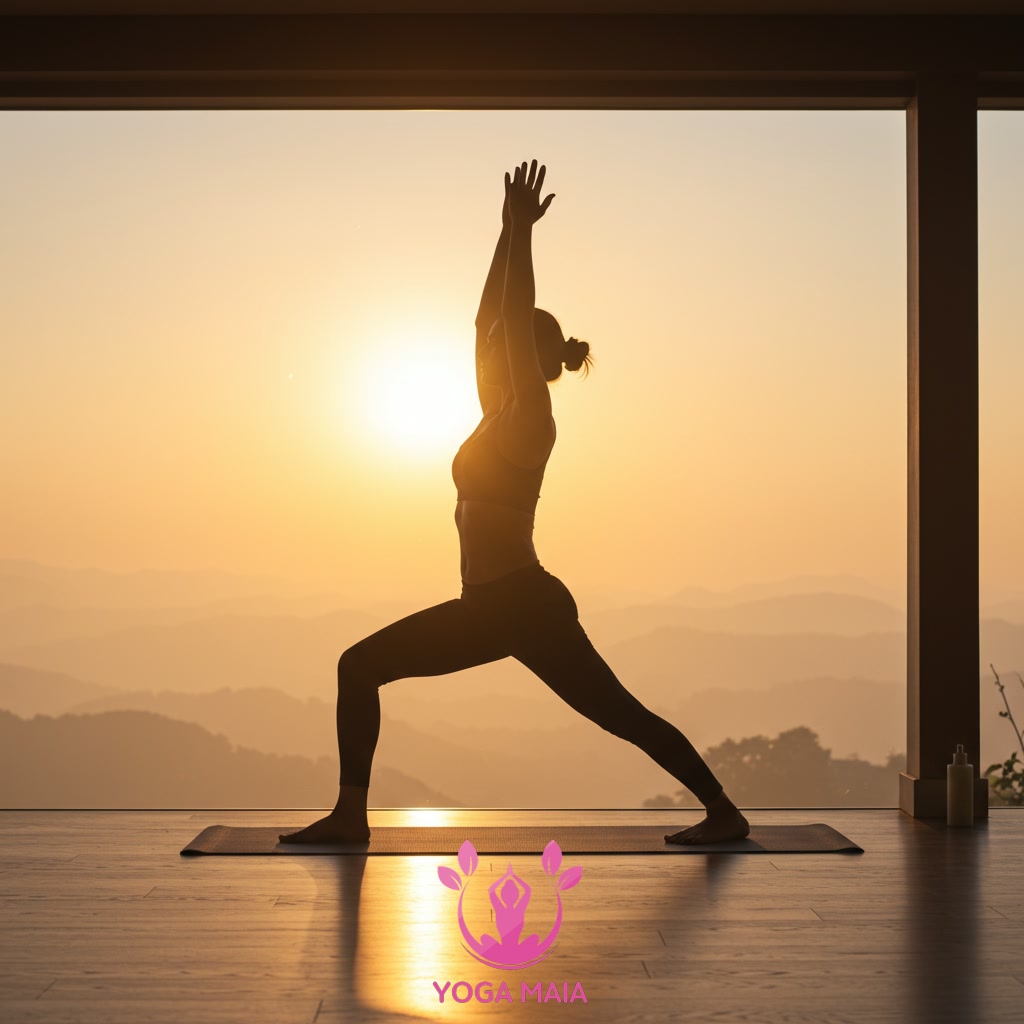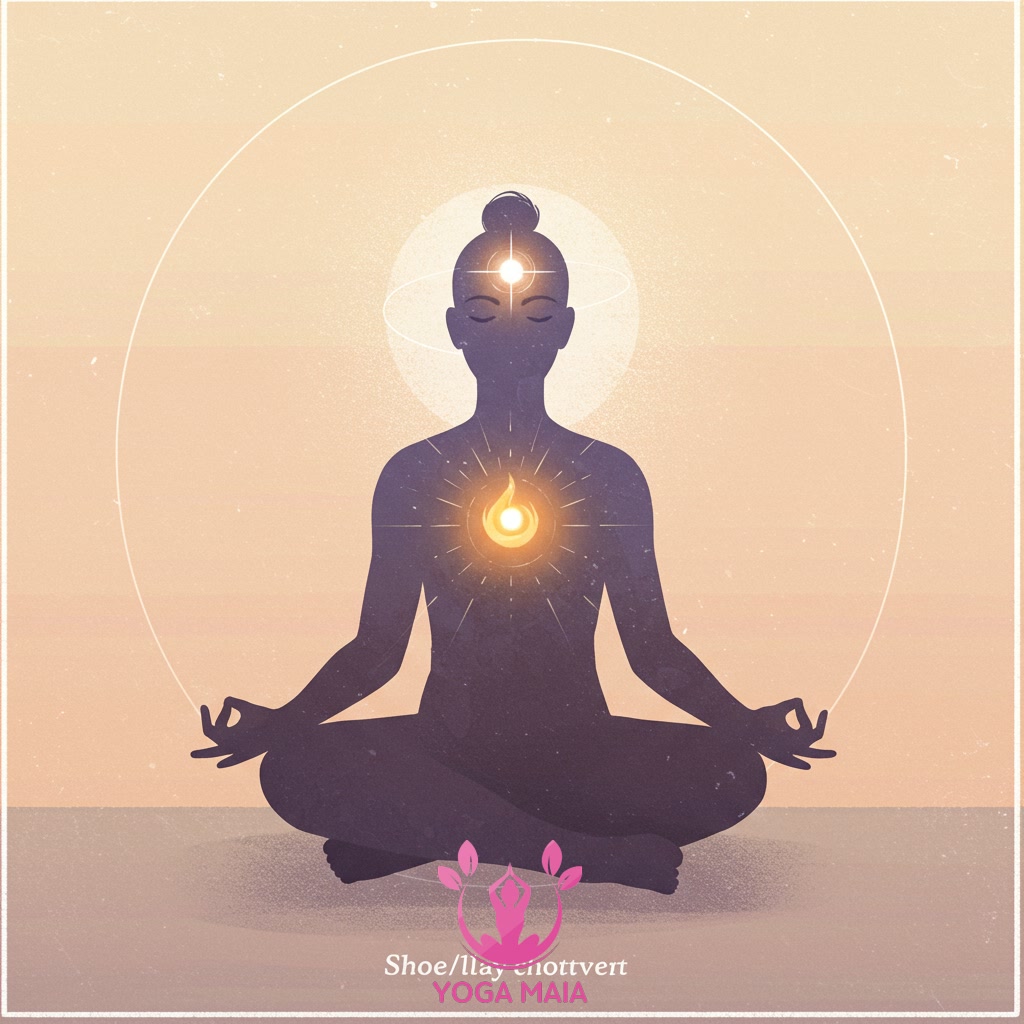Yoga Blog
Exploring the Eight Limbs of Yoga: Patanjali’s Ancient Path to Wholeness

This exploration delves into Patanjali’s Eight Limbs of yoga, presenting them as an ancient, comprehensive path towards achieving wholeness. It outlines the foundational principles and progressive stages of this traditional yoga system. By understanding and practicing these limbs, individuals can navigate a journey towards physical, mental, and spiritual integration through yoga.
Table of Contents
- Section 1: Introduction: Understanding Patanjali’s Eight Limbs
- Section 2: The Foundation: Yama and Niyama (Ethical Disciplines)
- Section 3: The Physical Practice: Asana and Pranayama (Posture and Breath)
- Section 4: Turning Inward: Pratyahara (Sense Withdrawal)
- Section 5: Cultivating Focus: Dharana and Dhyana (Concentration and Meditation)
- Section 6: The Goal: Samadhi (Absorption or Union)
- Section 7: Integrating the Eight Limbs: The Path to Wholeness in Daily Life
Section 1: Introduction: Understanding Patanjali’s Eight Limbs
Patanjali’s Yoga Sutras, compiled centuries ago, offer a profound framework for understanding and practicing yoga beyond just physical postures. Central to this ancient text is the concept of the Ashtanga, or Eight Limbs (Ashta means eight, Anga means limb). These limbs are not sequential steps to be mastered one after the other, but rather interconnected aspects of a holistic path towards inner peace, self-realization, and integration of mind, body, and spirit. The introduction to these limbs lays the foundation for a comprehensive journey, guiding practitioners through ethical principles, self-discipline, physical practice, breath control, sense withdrawal, concentration, meditation, and ultimately, a state of absorption or union. Understanding these eight limbs is key to unlocking the depth and transformative power of traditional yoga as envisioned by Patanjali.
 Introduction: Understanding Patanjali’s Eight Limbs
Introduction: Understanding Patanjali’s Eight Limbs
Section 2: The Foundation: Yama and Niyama (Ethical Disciplines)
Patanjali’s path begins with laying a strong ethical and moral groundwork, represented by the first two limbs: Yama and Niyama. Yama comprises five external disciplines that guide our interactions with the world and others, acting as ethical restraints. These include principles like non-violence (ahimsa), truthfulness (satya), non-stealing (asteya), right use of energy (brahmacharya), and non-possessiveness (aparigraha). Following Yama helps cultivate harmonious relationships and a sense of responsibility. Niyama, on the other hand, consists of five internal observances focused on self-discipline and personal conduct. These practices, such as purity (saucha), contentment (santosha), austerity (tapas), self-study (svadhyaya), and surrender to a higher power (ishvara pranidhana), foster inner growth and spiritual development. Together, Yama and Niyama form the essential foundation, preparing the practitioner mentally and ethically for the deeper stages of yoga practice.
 The Foundation: Yama and Niyama (Ethical Disciplines)
The Foundation: Yama and Niyama (Ethical Disciplines)
Section 3: The Physical Practice: Asana and Pranayama (Posture and Breath)
Following the foundational ethical principles of Yama and Niyama, Patanjali’s path moves to the physical dimension with Asana and Pranayama, the third and fourth limbs. Asana refers to the physical postures or poses practiced in yoga. The goal of Asana is not merely exercise, but to cultivate a stable and comfortable seat, preparing the body to sit for extended periods in meditation, and promoting health and vitality. Pranayama is the control and regulation of the breath, the vital life force (Prana). By consciously working with the breath, practitioners can calm the mind, increase energy, and deepen their awareness, creating a bridge between the external physical practices and the internal contemplative limbs that follow.
 The Physical Practice: Asana and Pranayama (Posture and Breath)
The Physical Practice: Asana and Pranayama (Posture and Breath)
Section 4: Turning Inward: Pratyahara (Sense Withdrawal)
Following the foundational ethical principles of Yama and Niyama, Patanjali’s path moves to the physical dimension with Asana and Pranayama, the third and fourth limbs. Asana refers to the physical postures, and Pranayama to the control of breath and life force. The next step, Pratyahara, the fifth limb, marks a crucial transition from the external to the internal aspects of practice. Pratyahara translates to ‘sense withdrawal’ or ‘control of the senses’. It is the discipline of consciously directing the senses inward, away from external stimuli and distractions. Instead of allowing the mind to be pulled by sensory input from the outside world, Pratyahara teaches us to observe these inputs without getting entangled, gradually gaining mastery over the senses and quieting the incessant chatter of the external world. This practice is essential preparation for the deeper, purely internal limbs that follow.
 Turning Inward: Pratyahara (Sense Withdrawal)
Turning Inward: Pratyahara (Sense Withdrawal)
Section 5: Cultivating Focus: Dharana and Dhyana (Concentration and Meditation)
Building upon the control of the body and breath achieved through Asana and Pranayama, Patanjali’s path progresses to the mastery of the mind with the sixth and seventh limbs: Dharana and Dhyana. Dharana, often translated as concentration, is the practice of fixing the mind on a single point or object. This could be something internal like the breath or a specific energy point, or external like a candle flame or a sound. The purpose is to train the scattered mind to focus its energy and attention. When this focused state becomes steady, sustained, and effortless, it evolves into Dhyana, or meditation. Dhyana is a state of deep absorption where the practitioner remains aware but the concentration flows naturally, leading to profound inner stillness, clarity, and a quietening of mental chatter. These limbs are vital for cultivating mental discipline and preparing the consciousness for deeper states.
 Cultivating Focus: Dharana and Dhyana (Concentration and Meditation)
Cultivating Focus: Dharana and Dhyana (Concentration and Meditation)
Section 6: The Goal: Samadhi (Absorption or Union)
The culmination of Patanjali’s eight limbs is Samadhi, the eighth limb, often translated as absorption or union. Building upon the focused concentration of Dharana and the sustained meditative flow of Dhyana, Samadhi represents a state where the meditator’s consciousness merges completely with the object of meditation. In this profound state, the sense of a separate self dissolves, and the practitioner experiences a state of pure awareness, unity, and bliss. It is not a mere trance but a heightened state of being, transcending the limitations of the mind and ego, leading to a deep realization of one’s true nature and interconnectedness with the universe. Samadhi is considered the ultimate goal of Ashtanga Yoga, signifying a state of wholeness and liberation.
 The Goal: Samadhi (Absorption or Union)
The Goal: Samadhi (Absorption or Union)
Section 7: Integrating the Eight Limbs: The Path to Wholeness in Daily Life
While Patanjali’s roadmap culminates in the profound state of Samadhi, the true essence of the Eight Limbs lies in their integration into the fabric of daily existence. This section explores how the principles of Yamas and Niyamas guide our ethical interactions and personal conduct off the mat, fostering integrity and mindfulness in every action. Asana and Pranayama cultivate physical vitality and mental clarity, preparing us to face life’s challenges with resilience. Pratyahara teaches us to withdraw from sensory overload, allowing for inner focus amidst external demands. Dharana and Dhyana build the capacity for sustained attention and present moment awareness, transforming mundane tasks into opportunities for mindful engagement. By weaving these limbs together, yoga becomes less about a practice session and more about a way of being, leading to a state of wholeness where inner peace and external life are harmoniously aligned.
 Integrating the Eight Limbs: The Path to Wholeness in Daily Life
Integrating the Eight Limbs: The Path to Wholeness in Daily Life












